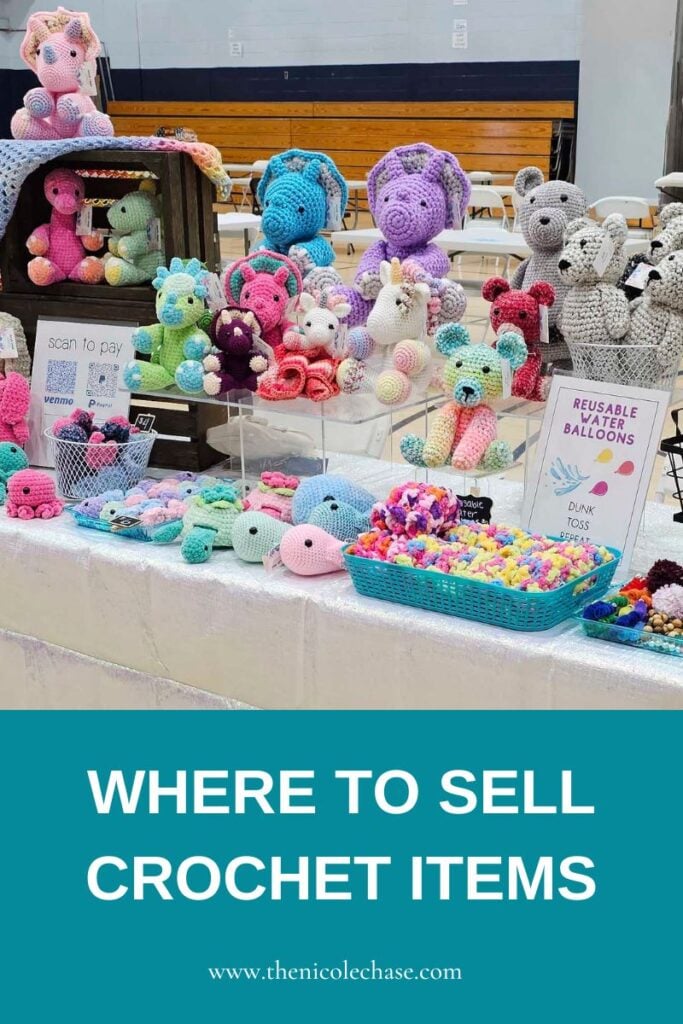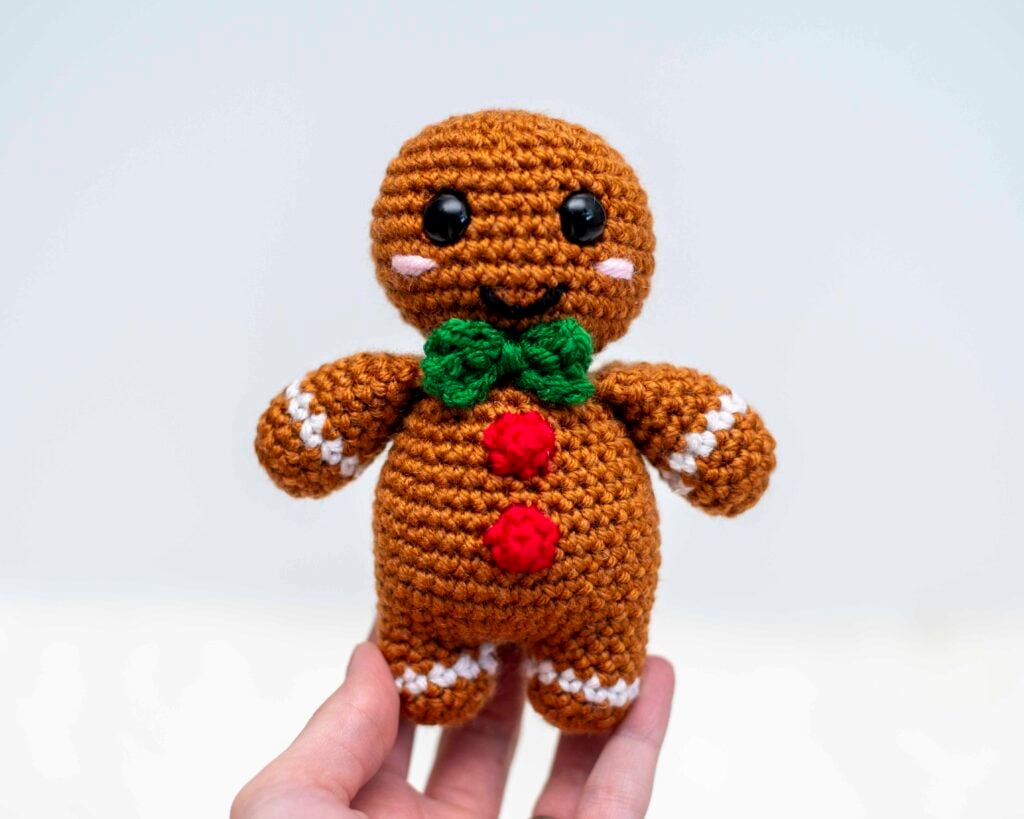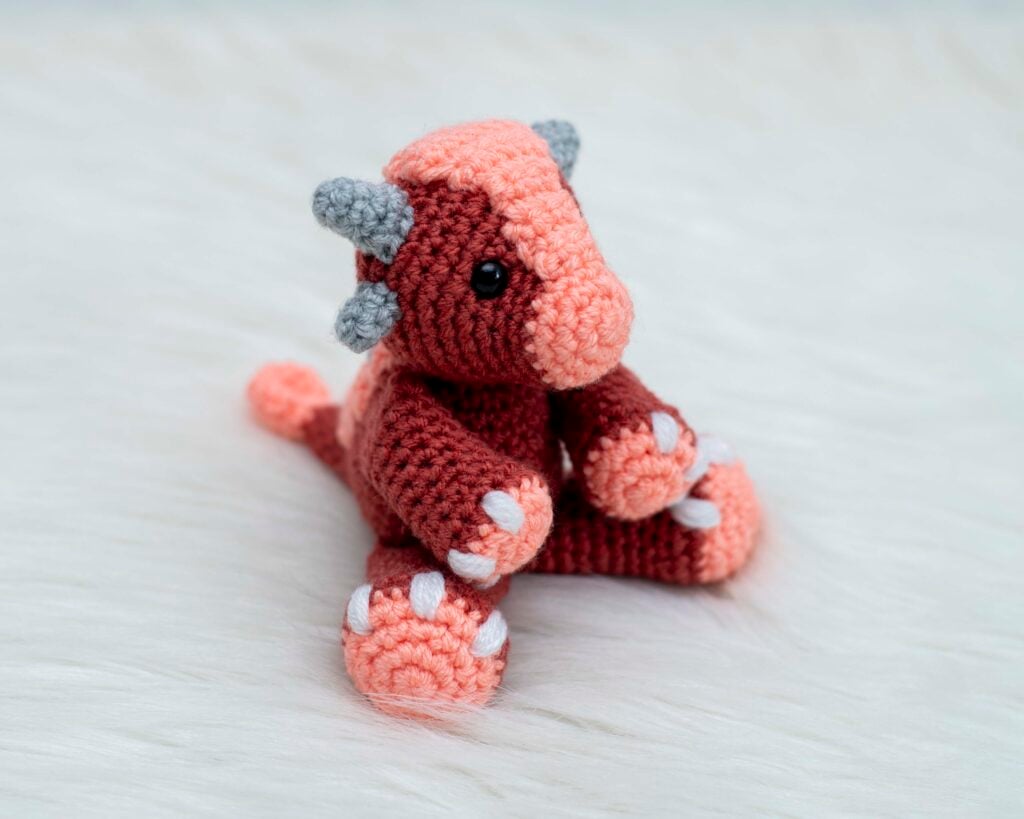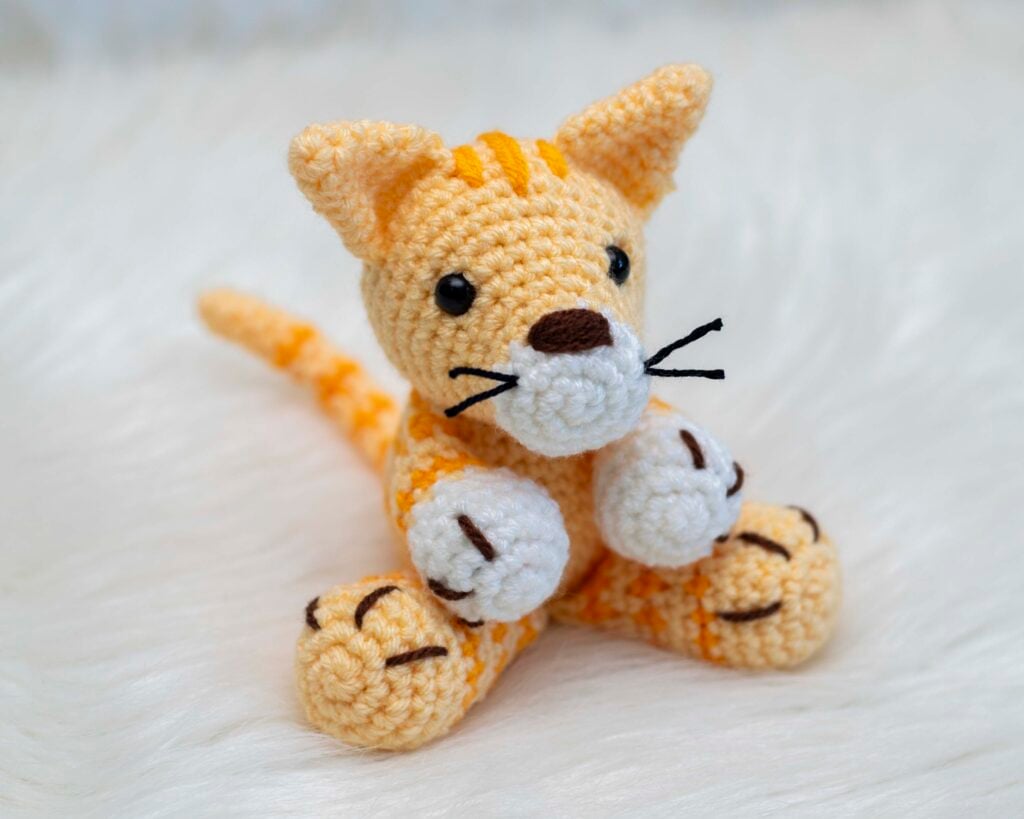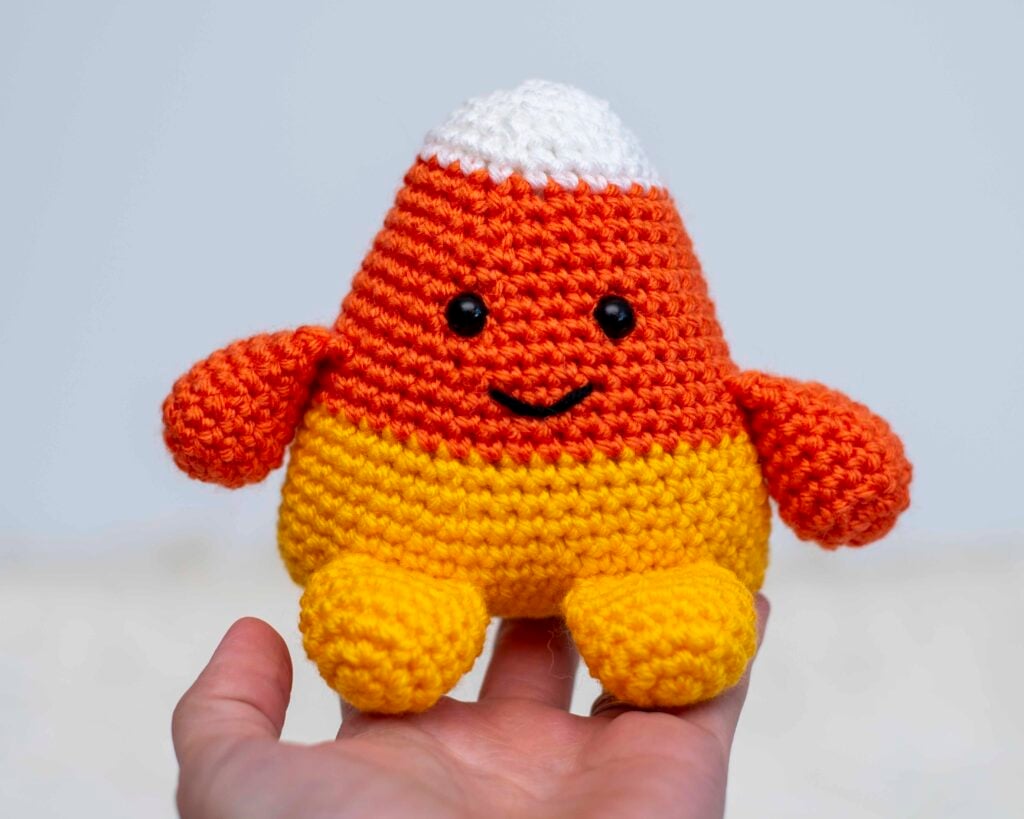The Best Places to Sell Your Crochet Items
This post may contain affiliate links. If you make a purchase through links on our site, we may earn a commission.
Are you a crochet artist with a growing stash of handmade items? If you’re wondering where to sell crochet items to turn your hobby into a business, you’re not alone! Like many makers, when that stash starts to become overwhelming, you may start thing about selling your crochet products. The good news is, there’s a whole world of selling opportunities out there waiting for you!
In this comprehensive guide, I’ll answer the question, “where to sell crochet items?” I’ll walk you through the pros and cons of several different platforms and venues, from setting up your own website to selling at local craft markets. By the end of this post, you’ll have a clear plan for expanding your crochet business and reaching new customers.
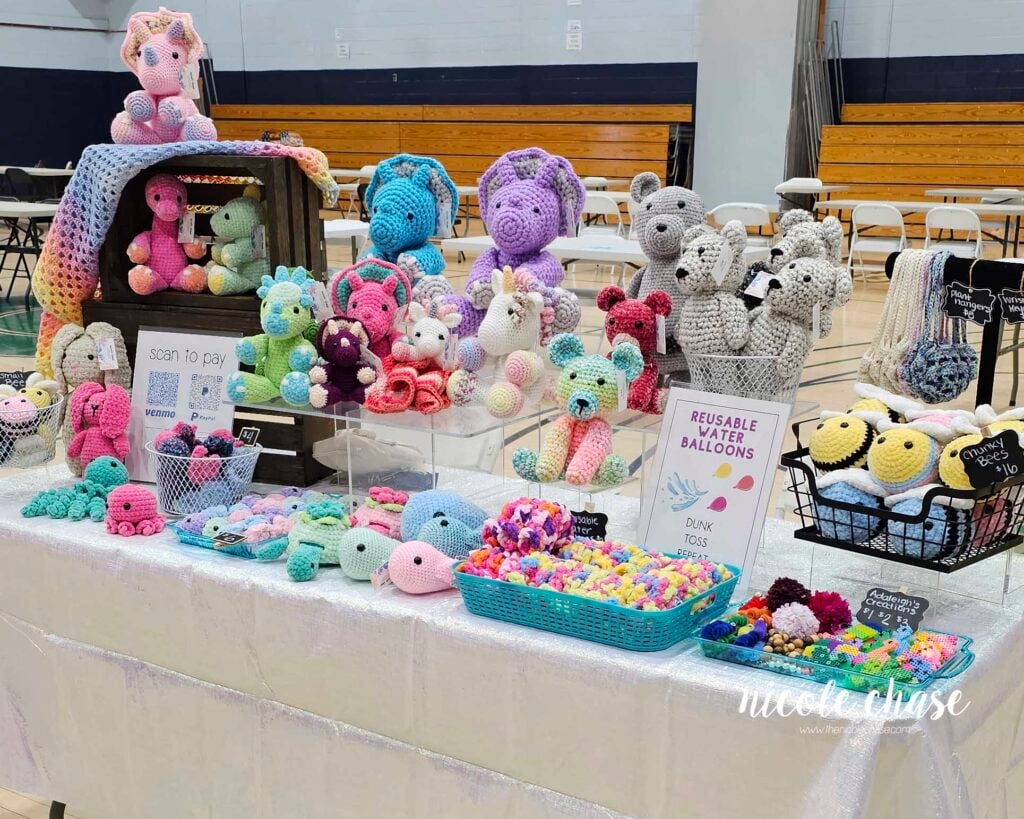
Table of Contents
Etsy: The Pros and Cons
As likely any crocheter can tell you, once the people in your life know that you crochet, they will almost surely start suggesting you open an Etsy shop. It’s a massive marketplace, and it’s no surprise that it’s the go-to platform for handmade sellers.
Why Etsy is a Good Starting Point
Etsy has a built in audience, which is one of the biggest advantages. Many people visit Etsy specifically to find handmade items, meaning you don’t have to spend a lot of time simply locating your customers. Etsy also handles the payment processing and gives you a user-friendly interface to set up your shop, making it very easy to start your own Etsy shop today.
The Drawbacks of Relying on Etsy
While Etsy is great for getting started, it’s not the most reliable solution. Etsy’s marketplace is very crowded, which makes it difficult for your products to stand out, without paying for ads. You also have to follow Etsy’s always-changing rules and fees, which can cut into your profits if you don’t price accordingly.
Most importantly, you can’t contact an Etsy customer outside of the Etsy platform, as it’s against their terms. Which means that you can’t keep in touch with your customers through an email list once they’ve left the platform.
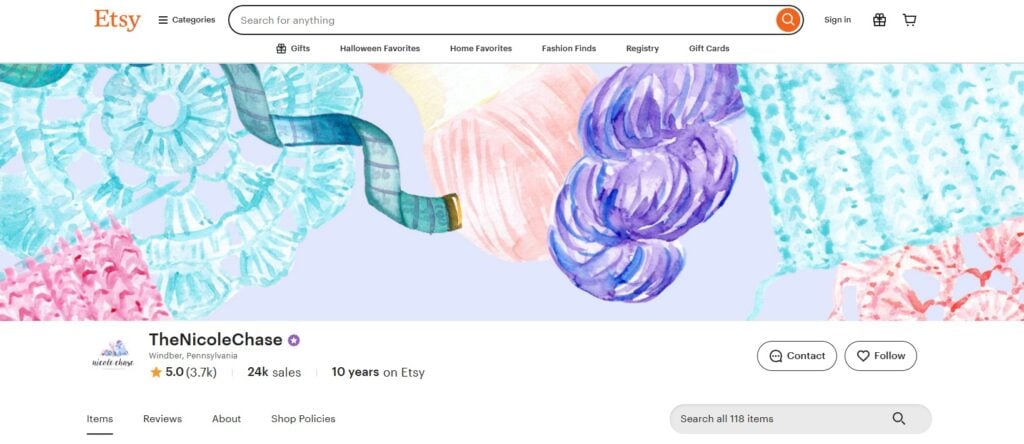
Social Media: From Likes to Sales
Beyond Etsy, social media is one of the best tools you have for selling your crochet items. You don’t need a dedicated business page to get started; you can begin sharing to the people who know you best.
Friends and Family
By far the easiest way to start selling is right where you already are: your personal Facebook or Instagram page. This is exactly how I got started myself! Your friends and family already know and trust you, so they are often your most enthusiastic customers.
Posting a picture of your finished project will likely elicit comments requesting to purchase, or even custom orders. You can also post any work with a clear “for sale message”. This is a low-pressure way to build your confidence and get feedback on your products before you start a business page.
Transition to a Business Page
After you’ve gotten a few sales, you might want to move to a dedicated business page. Your friends and family are already enjoying some of your crocheted items, and they want to pass on your information to their friends! Platforms like Facebook and Instagram allow you to create a free business profile, where you can build a curated feed of your work. You also get access to analytics, which can be really useful in determining who your customers are and what they’re looking for.
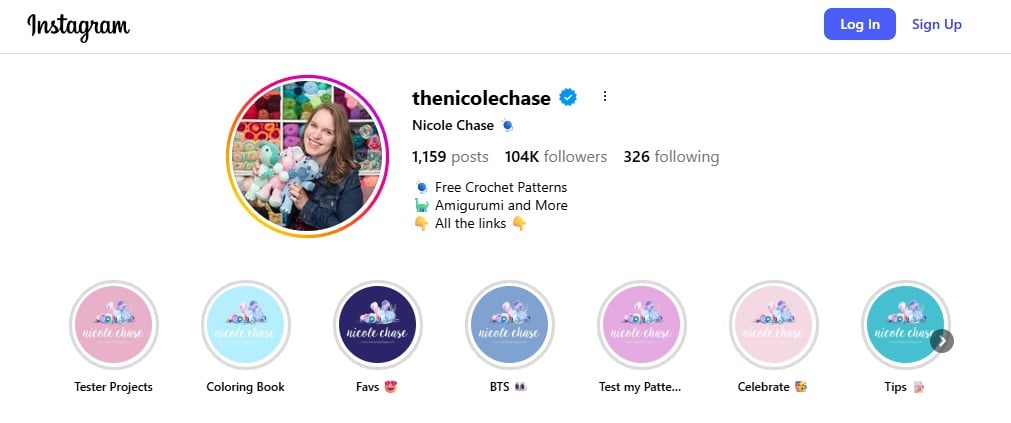
Local Craft Fairs: Selling in Person
Selling online is great for reaching a wide audience, but nothing beats the experience of an in-person market. Local craft fairs, farmers’ markets, and holiday bazaars can be a great way to sell your crochet items and build a loyal customer base.
Selling at craft fairs was one of the first ways that I really started to earn money from my crochet hobby. I always enjoyed figuring out which crochet products to prepare and designing my table or booth setup.
Connecting with your Community
The direct interaction with your customers is one of the biggest advantages of selling crochet items at local craft fairs. They can see and feel the quality of your work up close, which often leads to sales. The limited timeframe of an event also adds a sense of urgency; they can’t just “add to cart” and come back weeks later.
This is also a great opportunity to get feedback on your products, answer questions, and build relationships. Showing your face and sharing your story can turn a simple transaction into something memorable that keeps customers coming back.
Tips for a Successful Market Day
Preparation is key to a successful craft fair. First, make sure that you have a professional-looking display. You don’t have to spend a lot of money to make this happen; little touches like a simple tablecloth and organized products can go a long way.
Don’t forget to accept multiple forms of payment, including credit cards. You can get a free card reader from Square, or you can take digital payments like Venmo and PayPal.
Finally, be sure to have a way to keep in touch with your customers. You can do this with a business card with your social media and email information, a QR code that leads them to an email signup or Facebook page, or even an email list signup sheet. Then you can market to your customers after the event, and let them know about any future events.
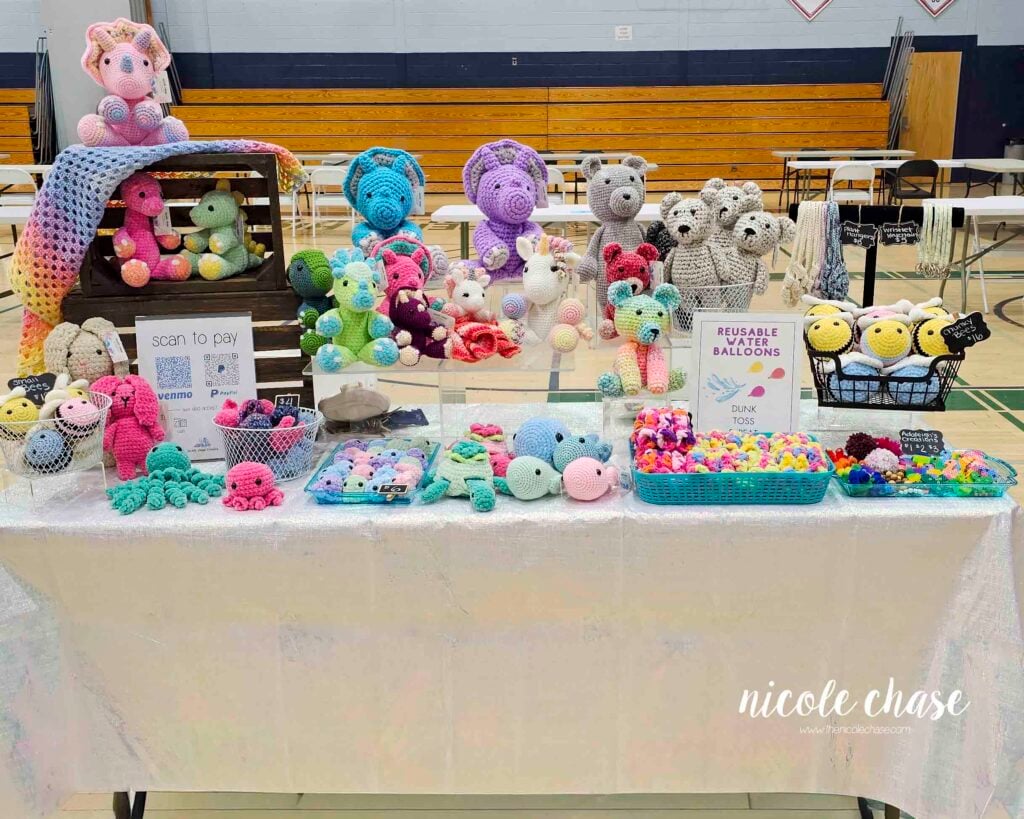
Your Own Website: Building Your Brand
While marketplaces like Etsy and social media are great for getting started, having your own website is a powerful step to build a professional, lasting business. Your website is your storefront and your home on the internet. It is a place that you fully control. So, if you’re asking yourself, “where can I sell crochet items with complete creative freedom?”, a website is your answer.
The Benefits of Full Creative Control
When you have your own website, you’re no longer subject to another platform’s rules, fees, or algorithm changes. You have complete control over your brand, the design of your shop, and how you interact with your customers. Most importantly, you can build an email list with your customer information to keep in touch with your audience and market directly to them.
Understanding the Costs
Unlike marketplaces that take a percentage of every sale, a website will have different fees. This will typically look like a monthly fee for your platform (typically $16-30 when starting out), as well as a small yearly fee to own your domain name (typically less than $20). While these are recurring costs, you don’t lose a percentage of your profit with every sale you make.
What You Need to Get Started
Setting up a website is more accessible than ever. Platforms like Shopify, Wix, and Squarespace are designed for creators and make it easy to build a beautiful store with no coding required. This very blog actually started out on Squarespace, and I used it for many years. This route is more tech-heavy, and there will be more to learn, but there with many resources online, it’s a very manageable learning curve. You’ll need to choose a simple, memorable domain name, and start by featuring your best-selling crochet items and a clear “about” section.
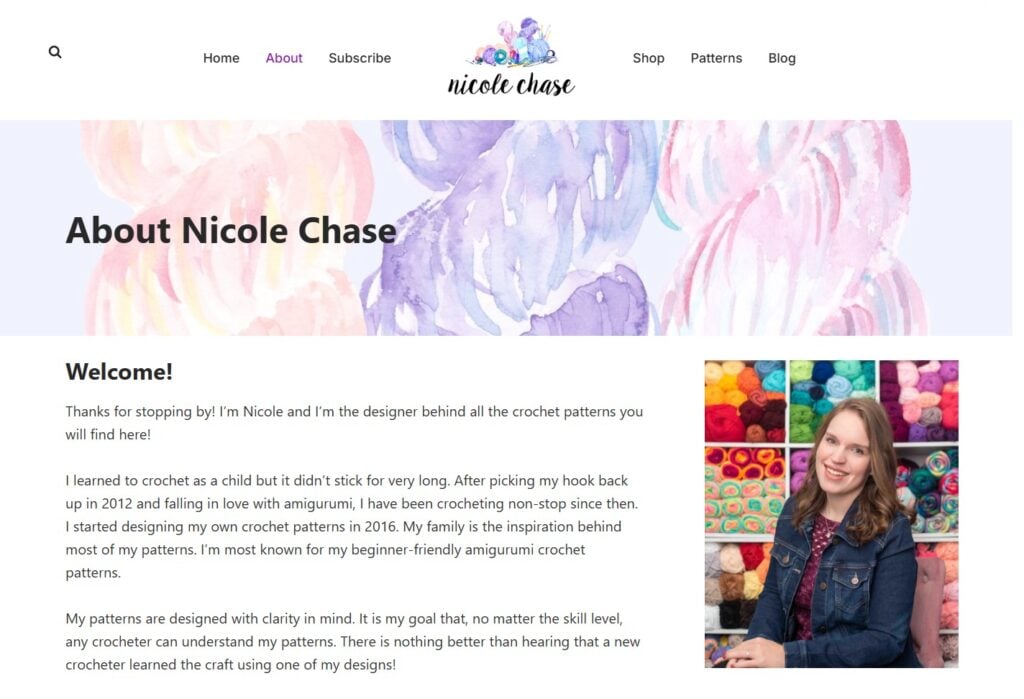
Wholesale & Consignment: Scaling Your Business
If you’re ready to move beyond one-off sales and start building consistent, larger orders, selling your crochet items wholesale or on consignment can be a great option. This is where you sell your crochet items to a store or boutique, and they resell them to their customers.
How to Approach Local Boutiques
The best way to get started is by researching local businesses that align with your brand. Look for gift shops, boutiques, or specialty stores that sell handmade or artisan goods. Prepare a pitch that includes a product catalog with clear photos. wholesale pricing information, and an introduction to your brand. A simple email or a visit with a few product samples can be a great way to start a conversation.
Understanding Your Profit Margins
The main difference with wholesale is that your per-item profit will be lower than selling directly to customers. You typically sell your products for 50% of the retail price. While the volume of sales can make this a very profitable strategy, it also means you will be making the same items over and over again to fill larger orders. This can become less exciting than creating new projects. You’ll also want to keep in mind the time it takes to make each item. While wholesale has more earning potential, you should still be making a living wage. Check out my crochet profit calculator for more details on pricing your crochet items. Consignment works similarly, but the store pays you only after the item has sold, and they keep a percentage of the sale (typically 30-50%).

Pinterest: A Powerful Marketing Tool
While often grouped with social media, Pinterest is a great visual search engine. Unlike Instagram or Facebook, where a post has a short lifespan, a well-made Pin can continue to drive traffic to your shop for months or even years. This is one of the best ways to market your products, no matter where you sell crochet items. Pinterest is something that I use in my crochet business every day.
How to Drive Traffic to Your Shop
The main idea behind Pinterest for your business is to create “Pins” that link back to your products. This could be a link to your Etsy listing, a product page on your website, or even a blog post about a new item. When someone searches for a product idea and finds your Pin, they can click through to your listing and become a potential customers.
Creating Pins that Sell
You’ll want to create high-quality Pins. This means using a clear vertical image of your product, typically with an eye-catching text overlay that tells the user what the Pin is about. Your caption should use keywords that describe your products so that they can easily be found in the search results.
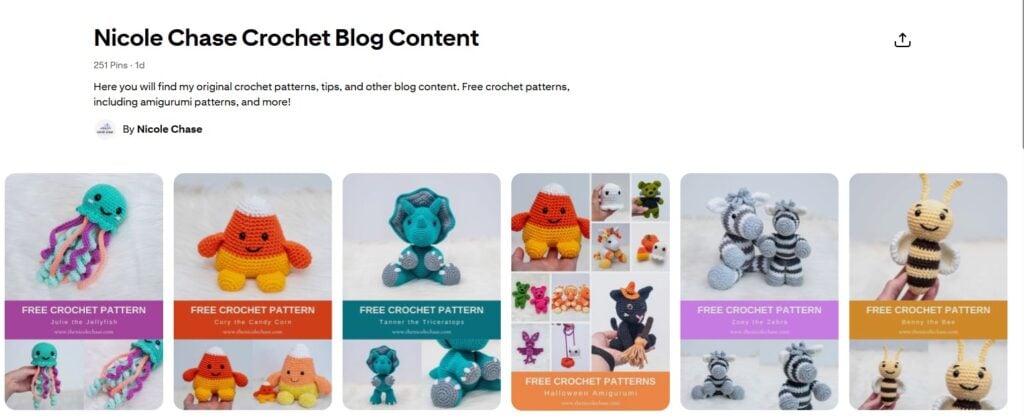
Pop-up Shops: Short-Term Sales
After you’ve gotten established and have a loyal customer base, you may wonder what’s next? Beyond traditional craft fairs, a pop-up show is a great way to sell your finished products in a temporary retail space. A kiosk at the mall, a corner of a local boutique, or even a temporary storefront are all great ways to generate a lot of buzz.
The Benefits of Temporary Retail
The main advantage of a pop-up shop is the ability to test a new market without the risk or cost of a long-term lease. You can try selling your crochet items in a different neighborhood during the holiday season to see fi there’s an audience for your products. The limited-time nature also creates a sense of FOMO, which can drive immediate sales.
The Time and Inventory Commitment
While pop-ups offer great potential, they are a significant time and inventory commitment. You’ll need to be present at the storefront for long periods of time, often for several days or even weeks. This requires you to step away from your making and other business tasks, so it’s important to plan your inventory and schedule accordingly. Additionally, keeping enough inventory on hand to sell regularly might not be sustainable, especially if you also have a thriving online shop.
Finding and Renting a Space
Finding pop-up opportunities requires some research. You can start by checking with your local Chamber of Commerce, small business associations, and commercial real estate agents. Many malls and shopping centers have dedicated spaces for temporary vendors. You can also just simply reach out to local business you admire and propose a partnership.

The Best Place to Sell is… Everywhere
As you can see, there is no single “best” place to sell your crochet items. Each platform and venue has its own unique set of advantages and disadvantages. The key to building a successful, long-term crochet business is about building a multi-channel strategy.
By starting with a platform like Etsy, using social media to connect with your first customers, and expanding to your own website or local markets, you can build a sustainable business that doesn’t depend on one source of income.
Take a look at the options and decide which one feels like the right fit for you right now. Whether you’re brand new or a seasoned seller, there’s a new opportunity waiting for you.
I hope that you enjoyed this post about where to sell crochet items!
More Resources for your Crochet Business
Looking for more ways to grow your brand and perfect your craft? Check out some of these other posts and patterns to help you on your journey.
- Pricing Calculator: Now that you know where to sell, learn how to price your items to make a living wage and build a profitable business.
- Yarn Inventory: Never lose track of your yarn stash again! This simple inventory tracker will help you stay organized and mange your materials like a pro.
- Supplies List: Looking for the right tools to get started? Find all the essential items you need for craft fairs and markets in one convenient place.
Looking for Your Next Best-Selling Project?
Ready to start your next project and sell your creations? Find your next favorite make with some of my most popular patterns.
- Mini Tanner the Triceratops: This cute dinosaur is consistently a best-seller, and doesn’t take quite as long as it’s larger counterpart. Have your customers choose their own colors to sell custom orders, or make them in your own chosen colors to have them ready-to-sell.
- Mini Whale: Need to build up your inventory for a local market? This quick and easy project can be made in an afternoon and is super cute!
- Animal Amigurumi: You can’t go wrong with a cute amigurumi animal, especially when it’s made in a plush yarn like Parfait Chunky. Check out my full collection of animal patterns.
I hope you enjoyed this post! Be sure to leave me a comment below to let me know what you think.
Want to see more from me? Be sure to subscribe to my email newsletter so that you never miss a post!
Follow along with me on Instagram for daily updates and a behind the scenes look at my designs.
I’d love to see what you make with this tutorial! Don’t forget to share your finished work with me: on social media by tagging me @thenicolechase, in your Ravelry projects, or post over in my Facebook group!
Thanks for stopping by! Happy crafting!
Nicole
PATTERN COPYRIGHT © 2025 NICOLE CHASE. ALL RIGHTS RESERVED.
PATTERN MAY NOT BE ALTERED, COPIED, REDISTRIBUTED OR SOLD AS YOUR OWN PATTERN.
YOU MAY SELL THE FINISHED PRODUCT ON A SMALL SCALE. PATTERN/DESIGN CREDIT GIVEN TO WWW.THENICOLECHASE.COM IS APPRECIATED. PERMISSION TO SELL DOES NOT INCLUDE MASS PRODUCTION. LARGE SCALE PRODUCTION IS PROHIBITED.
PHOTOGRAPHY COPYRIGHT © 2025 NICOLE CHASE. ALL RIGHTS RESERVED.
PHOTOS MAY NOT BE ALTERED, COPIED, REDISTRIBUTED OR SOLD AS YOUR OWN.
This post may contain affiliate links. If you make a purchase through links on our site, we may earn a commission.

